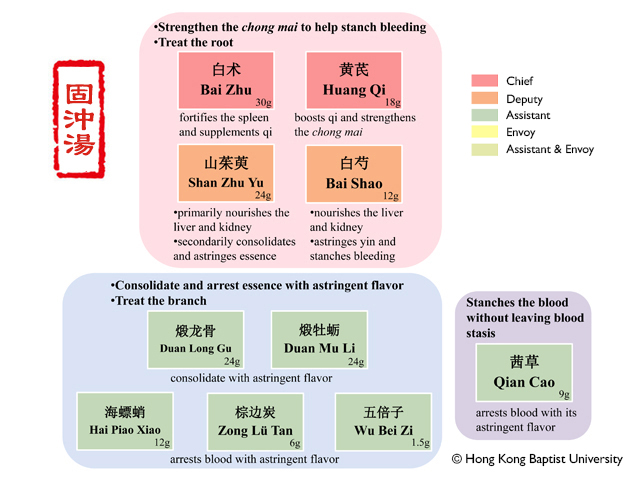
| Chief | Bai Zhu |
| Treat the root. |
| Chief | Huang Qi |
| Treat the root. |
| Deputy | Shan Zhu Yu |
| Treat the root. |
| Deputy | Bai Shao |
| Treat the root. |
| Assistant | Duan Long Gu |
| Treat the branch. |
| Assistant | Duan Mu Li |
| Treat the branch. |
| Assistant | Hai Biao Xiao |
| Treat the branch. |
| Assistant | Zong Bian Tan |
| Treat the branch. |
| Assistant | Wu Bei Zi |
| Treat the branch. |
| Assistant | Qian Cao |
| Stanches the blood without leaving blood stasis. |